I’ve been absent from the radio lately but I finally got some time to update some gear and get my KX3 on the air on digital modes. Tonight I received the Shortwave Radiogram; a program I really enjoy receiving.
The program, decoded.
Welcome to program 144 of Shortwave Radiogram. I'm Kim Andrew Elliott in Arlington, Virginia USA. Here is the lineup for today's program, in MFSK modes as noted: 1:46 MFSK32: Program preview (now) 2:55 Russian plans first spacecraft to Moon in 45 years* 6:37 MFSK64: German, US companies to develop COVID-19 vaccine 8:47 Mercury has a surprising amount of ice* 12:31 This week's images* 28:16 MFSK32: Closing announcements * with image(s) Please send reception reports to radiogram@verizon.net And visit http://swradiogram.net Twitter: @SWRadiogram From Radio Free Europe/Radio Liberty: Russia Plans To Send First Spacecraft To Moon In 45 Years 17 March 2020 Russia plans to land a spacecraft on the moon's surface next year for the first time in more than four decades. The country will launch Luna-25 on October 1, 2021, Igor Mitrofanov, the head of the nuclear planetology department at the Space Research Institute, said at a meeting of scientists on March 17. Moscow last launched a spacecraft to the surface of the moon in 1976 as the Soviet Union's space race with the United States came to an end. Luna-25 will carry out scientific research in the polar region of the moon, including studying the properties of the soil. According to Russia's space program agenda, the country plans four more launches to the moon by 2028. With reporting by Vedomosti and Ria Novosti https://www.rferl.org/a/russia-plans-to-send-first-spacecraft-to-moon-in-45-years/30492338.html

Figure 1. Illustration of the Luna-Glob lander
Shortwave Radiogram now changes to MFSK64 ...
Before RSID: <<2020-03-22T23:36Z MFSK-32 @ 1422100+1500>>
This is Shortwave Radiogram in MFSK64
Please send your reception report to radiogram@verizon.net
From Deutsche Welle:
Coronavirus: German, US companies sign deal to develop vaccine
Germany's BioNTech is to use its drug development platform
alongside Pfizer to find a vaccine for COVID-19. It comes
after Donald Trump reportedly tried to entice a German lab
to develop a vaccine exclusively for the US.
17 March 2020
US drugmaker Pfizer and Germany's BioNTech will immediately start
work together on a potential vaccine for COVID-19, the companies
announced in a joint statement on Tuesday.
Both companies have signed a letter of intent for the vaccine's
distribution outside China and they will decide on financial
terms, manufacturing and possible commercialization over the next
few weeks.
"This is a global pandemic, which requires a global effort. In
joining forces with our partner Pfizer, we believe we can
accelerate our effort to bring a COVID-19 vaccine to people
around the world who need it," said Ugur Sahin, Co-Founder and
CEO of BioNTech.
The companies said they would use BioNTech's mRNA-based drug
development platform and will use research and development sites
from the two companies in both the US and Germany.
The two companies already work together to develop mRNA-based
vaccines for influenza.
A day earlier, BioNtech signed a deal with Shanghai Fosun
Pharmaceutical outlining its rights in China to its experimental
coronavirus vaccine.
The companies are aiming to start testing on humans from late
April.
Race for vaccine
On Sunday, German media reported that US President Donald Trump
was offering large sums of money to German scientists working on
a vaccine. He allegedly wanted to secure exclusive rights to the
CureVac company's work.
Immunity to the rapidly-spreading virus is seen as the most
effective way to stop the global outbreak.
Nearly 179,000 people around the world have been infected with
the coronavirus and more 7,000 people have died.
Massachusetts-based Moderna Inc is also competing to develop a
vaccine. The bio-technology company is collaborating with the US
National Institutes of Health and on Monday announced that it
dosed the first patient with its experimental coronavirus vaccine
in an early-stage trial.
https://www.dw.com/en/coronavirus-german-us-companies-sign-deal-to-develop-vaccine/a-52802822
See also:
https://investors.biontech.de/news-releases/news-release-details/pfizer-and-biontech-co-develop-potential-covid-19-vaccine
This is Shortwave Radiogram in MFSK64
Please send your reception report to radiogram@verizon.net
From New Atlas:
Mercury may paradoxically use intense heat to make huge amounts
of ice
Michael Irving
16 March 2020
Despite being the closest planet to the Sun, Mercury is home to a
surprising amount of ice. Now, researchers at Georgia Tech have
put forward an explanation for how at least some of it got there
- and it turns out, the heat plays an important role.
Most of Mercury is a broiling hot hellscape, where daytime
temperatures peak at a toasty 427 °C (800 °F). But with no
atmosphere to spread the heat around, the poles remain chilly,
and the floors of some deep craters never see sunlight. There,
temperatures can be as low as -170 °C (-274 °F) - the perfect
conditions for ice to form.
And form it does, with spacecraft observations and other
calculations showing large deposits at both poles of the planet.
How it actually got there in the first place has remained a
mystery, but now the Georgia Tech team has proposed at least a
partial explanation.
The team says that protons - charged particles from the Sun -
pelt the surface of Mercury, creating minerals called hydroxyl
groups (OH) in the soil. Then, the intense heat helps release and
energize these minerals, so they collide and form water molecules
and hydrogen.
These water molecules then drift around the planet. Some will
inevitably be broken down again by the extreme sunlight, but some
molecules will settle in the polar craters, where the cold
conditions are ready to make some ice.
"The total amount that we postulate that would become ice is 10
trillion kg (11 billion tons) over a period of about 3 million
years," says Brant Jones, first author of the study. "The process
could easily account for up to 10 percent of Mercury’s total
ice."
The rest, they posit, would arrive through asteroid strikes. That
doesn’t necessarily mean the asteroid itself has to be carrying
much water - the forces of the impact itself can trigger a
chemical reaction that produces the stuff.
The research was published in the Astrophysical Journal Letters.
The team describes the idea in the video below.
https://newatlas.com/space/mercury-ice-heat-chemistry/
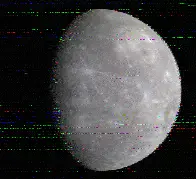
Figure 2. A true color image of Mercury, snapped by MESSENGER
This is Shortwave Radiogram in MFSK64 Please send your reception report to radiogram@verizon.net This week's images:

Figure 3. A priest Miroslaw Matuszny walks on the street holding Relics of St Anthony as he prays to stop spread of coronavirus (COVID-19) in Lublin, Poland, 17 March. From reut.rs/3a3CgE4
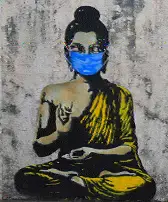
Figure 4. Street art in Mumbai. From bit.ly/2xOUuuF

Figure 5. A mural at municipal radio station WNYC in New York City, painted as part of the Works Progress Administration during the 1930s Depression. From bit.ly/2x5aTea

Figure 6. A family enjoys the cherry blossoms at the National Arboretum in Washington DC, 18 March. From wapo.st/2wmHUlX
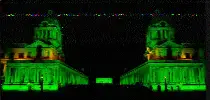
Figure 7. The Old Royal Naval College in Greenwich in London marked St Patrick’s Day. From bit.ly/2Wp4CEM
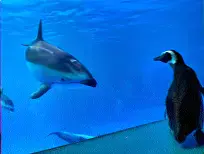
Figure 8. During the absence of human visitors due to COVID-19, Wellington, a 32-year-old rockhopper penguin, meets other animals while exploring the Shedd Aquarium in Chicago. From reut.rs/2Quo9zJ
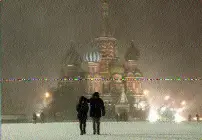
Figure 9. People walk through snow in Red Square during a recent stretch of cold weather in Moscow. From bit.ly/2Ukxyen
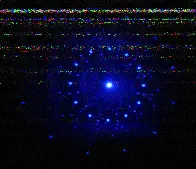
Figure 10. Light from a GaN laser diode, diffracting through a GaN LED wafer etched with a photonic quasi-crystal with twelvefold rotational symmetry for enhancing light extraction. From bit.ly/2UxlKFZ
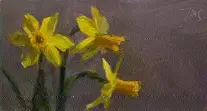
Figure 11. Our painting of the week is "Daffodils" by Julian Merrow-Smith. From bit.ly/2xasyku
Shortwave Radiogram returns to MFSK32 ... Before RSID: <<2020-03-22T23:58Z MFSK-64 @ 1422100+1499>> This is Shortwave Radiogram in MFSK32 ... Shortwave Radiogram is transmitted by: WRMI, Radio Miami International, wrmi.net and WINB Shortwave, winb.com Please send reception reports to radiogram@verizon.net And visit http://swradiogram.net Twitter: @SWRadiogram or twitter.com/swradiogram o im Elliott. Please join us for the next Shortwave Radiogram.